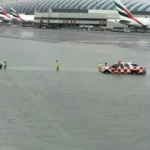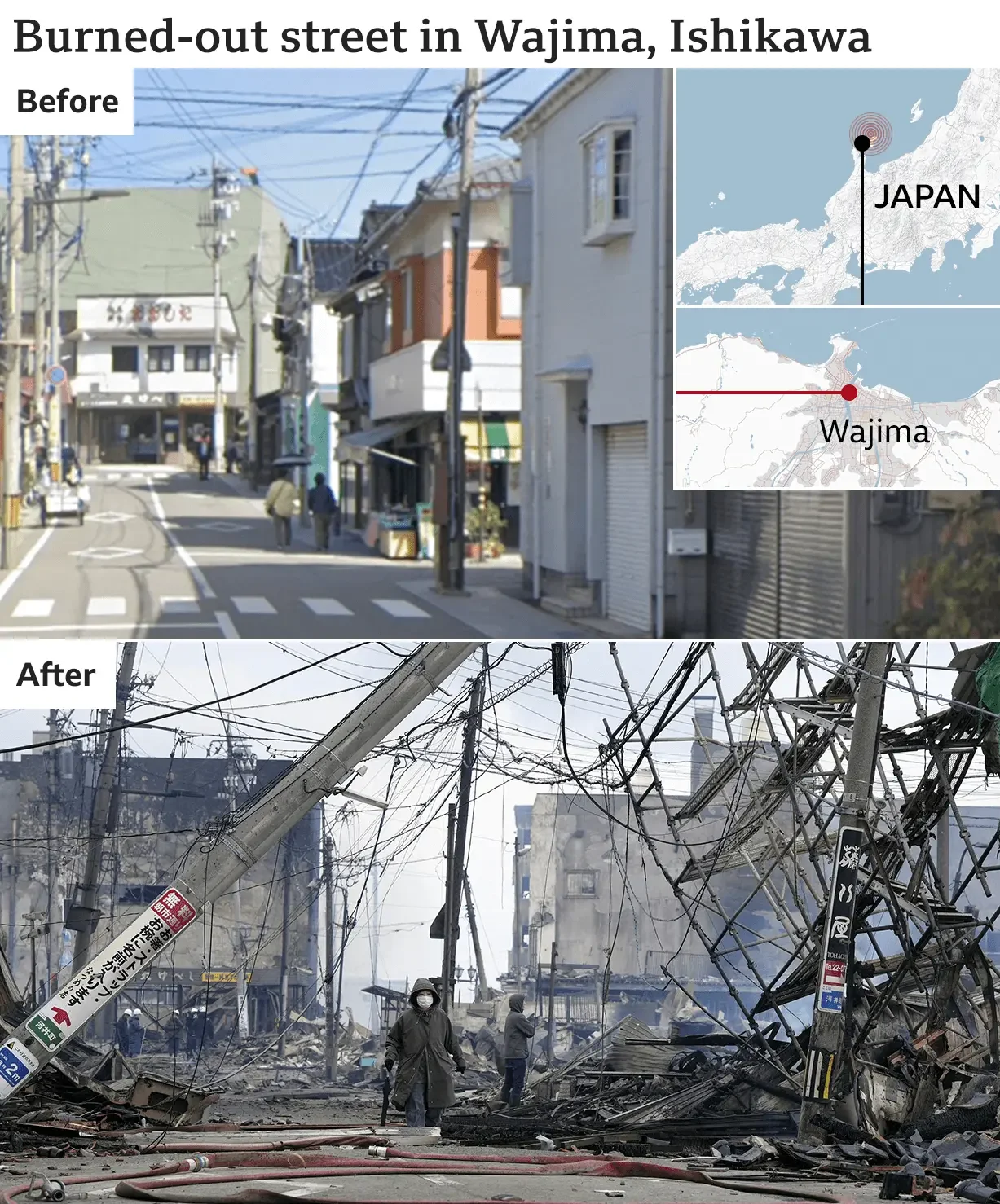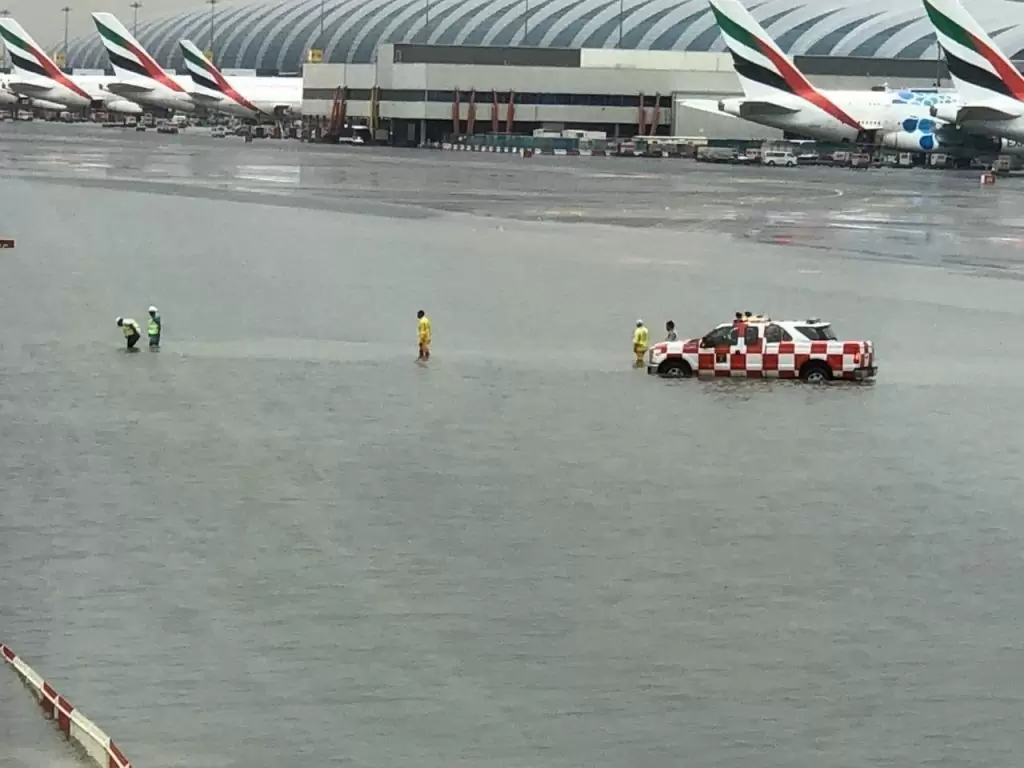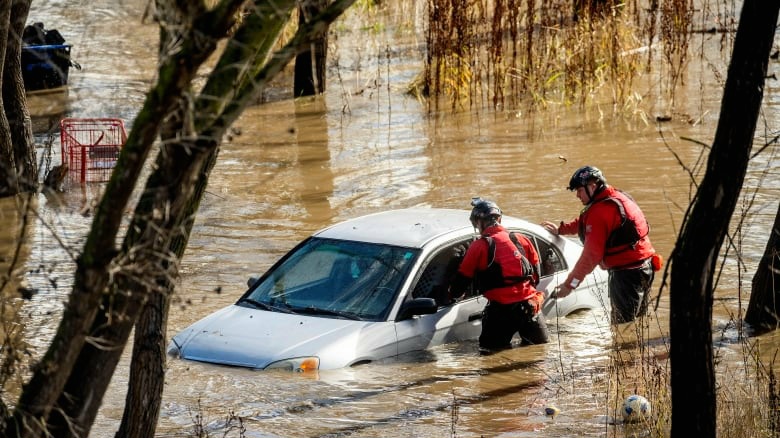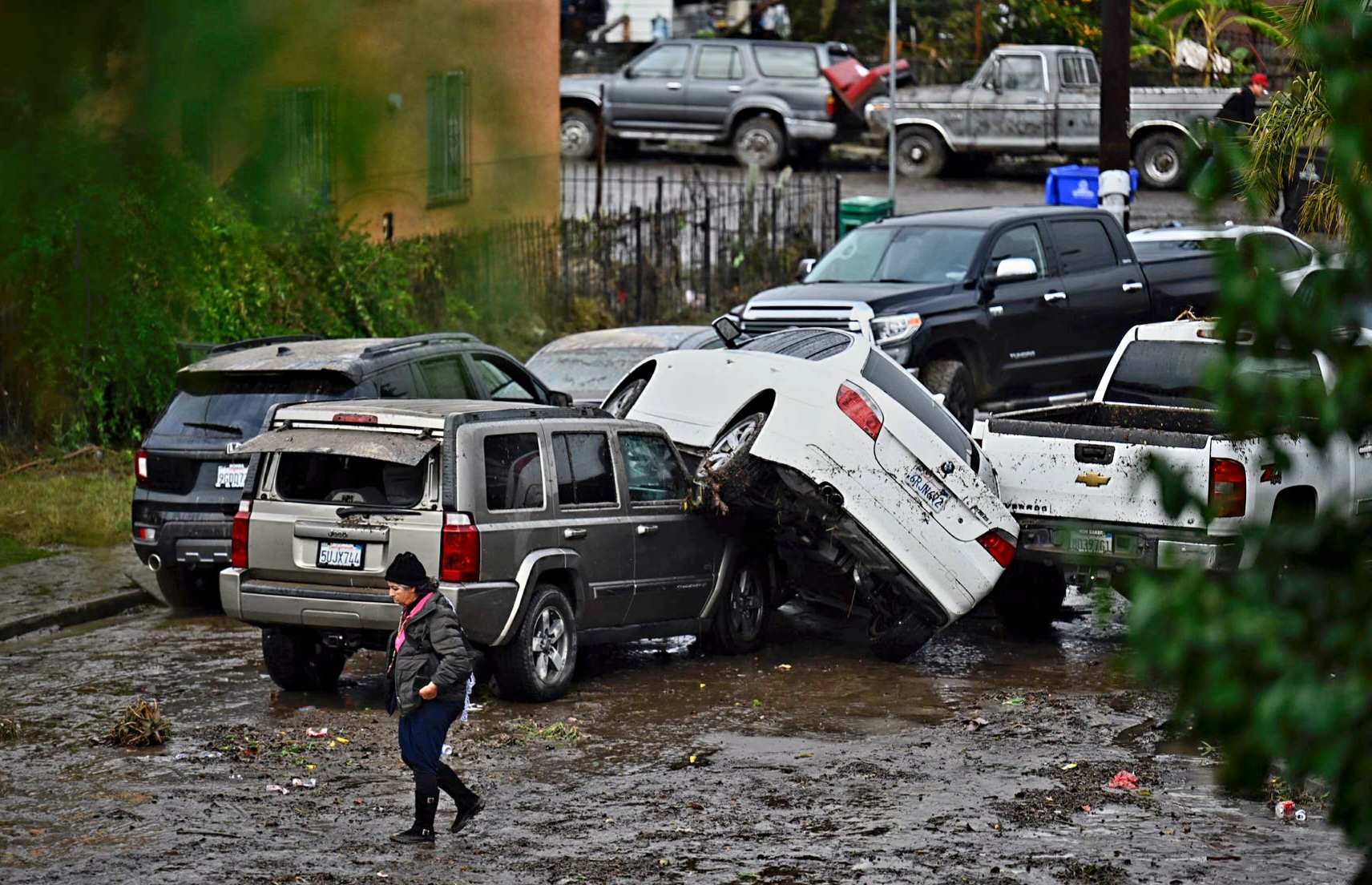Powerful earthquake
A series of powerful earthquake struck Japan’s western coastline, triggering tsunami waves and causing significant disruptions. The 21 earthquakes, each with a magnitude exceeding 4.0, led to evacuation orders, power outages for nearly 33,000 households, and the closure of vital routes, including major highways. The devastating events claimed the lives of nearly 50 people on the first day of 2024, as the nation grappled with the aftermath. The Japan Meteorological Office reported a total of 155 earthquakes, with the initial quake measuring 7.6 in magnitude. Tsunami warnings were issued, resulting in waves up to 5 feet high.
The extent of the damage continued to unfold, with reports of collapsed buildings, sunken boats, burned homes, and power outages. A major fire erupted in Wajima, exacerbating rescue operations amid rising requests for assistance. Evacuations were widespread, with thousands seeking shelter in military bases and sports facilities. Japanese Prime Minister Fumio Kishida emphasized the urgency of search and rescue efforts during an emergency meeting.
International responses included tsunami warnings issued by Russia, South Korea, and North Korea. The United States, as a close ally, expressed readiness to provide assistance. Japan’s history of Earthquake, coupled with its stringent building regulations, did not prevent the widespread impact of this disaster. The tragic events recalled Japan’s vulnerability to seismic activity, with the devastating 2011 earthquake and tsunami leaving a profound impact on the nation.
Shinkansen bullet trains and highways are back in operation following the stranding of several thousand people, with some enduring nearly 24 hours of delays. The seismic event, measured at 7.6 by the Japan Meteorological Agency (JMA), was one of over 400 earthquakes that rattled the region until Wednesday morning. Despite the increasing casualties, the efficient dissemination of public warnings through broadcasts and phones, coupled with a swift response from the public and officials, seemed to have mitigated some of the damage.
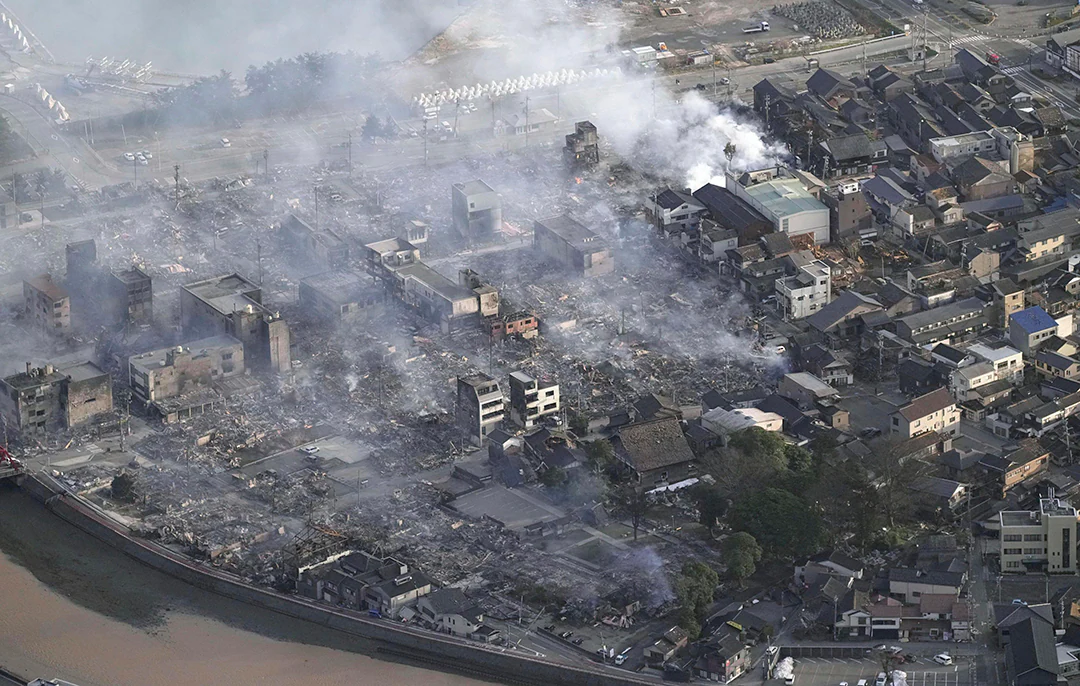
Japanese rescuers are in a race against time to find survivors following a powerful Earthquake that struck Ishikawa prefecture, killing at least 62 people. The 7.5-magnitude quake on Monday triggered tsunami waves over a meter high, ignited a major fire, and caused severe road damage. The Noto peninsula, particularly towns like Wajima and Suzu, bore the brunt, with hundreds of buildings destroyed by fire and houses flattened. Satellite images reveal the extensive destruction.
As of Wednesday, 62 deaths and over 300 injuries were confirmed, with expectations of the toll rising. Rescuers face aftershocks, poor weather, and the threat of landslides. Over 31,800 people are in shelters, and tens of thousands of homes are reported destroyed. Prime Minister Fumio Kishida emphasized the urgency of rescue efforts amid a heavy rain warning in the area. While Japan is earthquake-prone, the preparedness of the affected region has been notable.
The Noto peninsula has experienced an increasing number of earthquakes since 2018, as per a government report. Despite the challenges, Japan lifted tsunami warnings, and the nation is mobilizing its disaster-ready measures to cope with the aftermath.
The recent disaster is a stark reminder of Japan’s vulnerability to seismic activity, with the devastating 2011 earthquake and tsunami still etched in the nation’s memory.
In a separate incident not linked to the earthquake, a collision occurred at Tokyo’s Haneda airport on Tuesday involving a Japan Airlines plane and a coastguard aircraft en route for Earthquake relief efforts. Tragically, five individuals on the coastguard plane lost their lives. However, all 379 passengers and crew on the Japan Airlines plane successfully evacuated. Japan’s high seismic activity is attributed to its location on the Pacific Ring of Fire, where numerous tectonic plates converge. The nation’s ongoing vulnerability to earthquake has prompted the development of one of the world’s most advanced tsunami warning systems.


